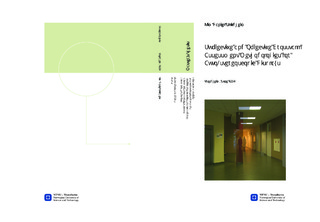| dc.contributor.advisor | Perkis, Andrew | nb_NO |
| dc.contributor.author | Skildheim, Kim Daniel | nb_NO |
| dc.date.accessioned | 2014-12-19T13:47:44Z | |
| dc.date.accessioned | 2015-12-22T11:46:54Z | |
| dc.date.available | 2014-12-19T13:47:44Z | |
| dc.date.available | 2015-12-22T11:46:54Z | |
| dc.date.created | 2012-11-08 | nb_NO |
| dc.date.issued | 2012 | nb_NO |
| dc.identifier | 566368 | nb_NO |
| dc.identifier.uri | http://hdl.handle.net/11250/2370547 | |
| dc.description.abstract | Stereoscopic perception is achievable when the observer sees a scene from a slightly different angle. Auto-stereoscopic displays utilize several separate views to achieve this without using any special glasses. Crosstalk is an undesired effect of separating views. It is one of the most annoying artefacts occurring in an auto-stereoscopic display. This experiment has two parts. The first part proposes a subjective assessment methodology for characterizing crosstalk in an auto-stereoscopic display, without restriction of subjects viewing behaviour. The intention was to create an inexpensive method. The measurement was performed by using a Kinect prime sensor as a head tracking system combined with subjective score evaluation to get a data plot of the perceived crosstalk. The crosstalk varies in line with image content, disparity and viewing position. The result is a data plot that approaches a periodically pattern, which is consistent with the characteristics of an auto-stereoscopic display. The result is not perfect since there are many sources of errors occurring. These errors can be improved with better head tracking, an improved movement system, post processing of data, more data and removal of outliers.The second part proposes methods for extracting subjective values based on interpolated plots and creating objective crosstalk influenced pictures which correlate with the subjective data. The best extraction method was to combine an adapted sine regression curve with a linear interpolation. This interpolation followed the subjective values in a parallel slice plot at 3.592 m from the screen. The interpolation was adapted to fit a derived model as best as possible to achieve a good correlation. Objective crosstalk pictures were created, where the amount of crosstalk was determined by the neighbouring view that influenced the current view the most. The correlation was based on the relationship between the SSIM value from the created crosstalk picture and the extracted subjective value. The total correlation of the pictures together were 0,8249, where the picture with the highest correlation had 0,9561. This method is quite good for pictures that have a maximum disparity grade below 38 pixels. The overall result is good and it is also a measure of quality for the subjective test. This result can be improved by increasing the complexity of how the objective crosstalk pictures are created by adding more views into account or try another method to create crosstalk. Improved extraction of subjective values will also be beneficial in terms of improving the correlation even more. | nb_NO |
| dc.language | eng | nb_NO |
| dc.publisher | Institutt for elektronikk og telekommunikasjon | nb_NO |
| dc.subject | ntnudaim:7696 | no_NO |
| dc.title | Subjective and Objective Crosstalk Assessment Methodologies for Auto-stereoscopic Displays | nb_NO |
| dc.type | Master thesis | nb_NO |
| dc.source.pagenumber | 70 | nb_NO |
| dc.contributor.department | Norges teknisk-naturvitenskapelige universitet, Fakultet for informasjonsteknologi, matematikk og elektroteknikk, Institutt for elektronikk og telekommunikasjon | nb_NO |

